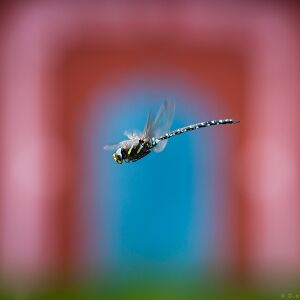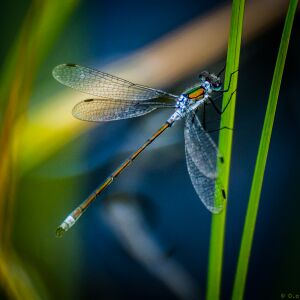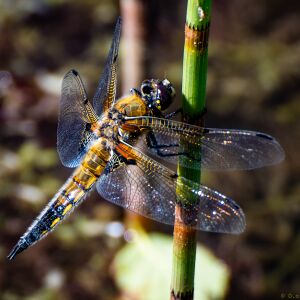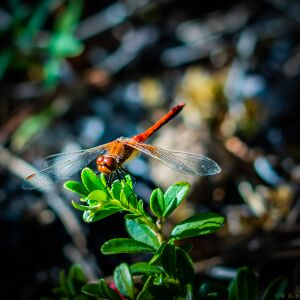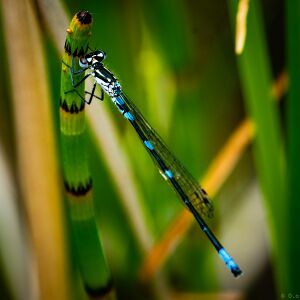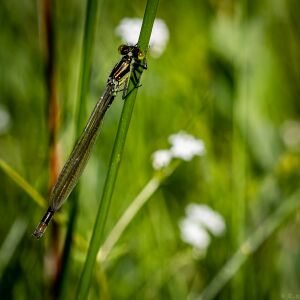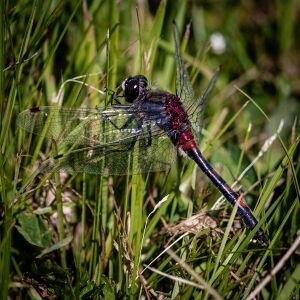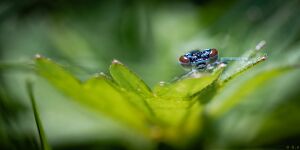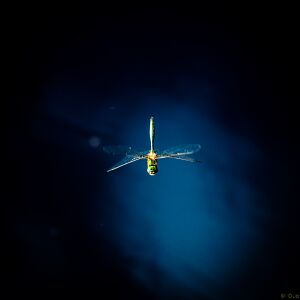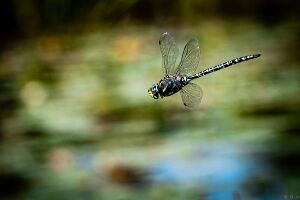Dragonflies
Of Damsels and Dragons
The best predators in the entire animal kingdom. One of the few relics of the past: dragonflies. And damselflies, too.
Of all the non-human subjects, dragonflies and damselflies are my absolute favourite. If you can have a hobby within a hobby, then taking pictures of dragonflies is mine.
It all started at the last day of August 2014, in Ruissalo Botanical Garden in Turku. I was enjoying a beautiful summer and decided to take a few shots of dragonflies, as there were literally everywhere around me. And so I captured this image.
Everything lined up perfectly and resulted in once in a lifetime photo: the dragonfly and the background are perfectly aligned, the focus is perfect, the insect is in flight, and I made only one attempt. I tried to repeat the shot over the years, but failed.
Anyway, I showed the photo to some people, and one of them asked the question that had to be asked. What dragonfly is this? Seriously, I had no idea. I had to dig it up - a quick read of a few articles on Wikipedia indicated that it is one of the hawkers (Aeshnidae). The answer was enough back then.
On the same day I also photographed another colourful insect, this time it was stationary.
And that is how I learned about a distinction in English between dragonflies and damselflies. The one above is a damselfly, common spreadwing.
(Side note from now smarter me: for a moment I thought it is L. virens, small spreadwing, however they do not appear in southern Finland. Plus, small spreadwings have brown pterostigmata.)
These two pictures, however, failed to fuel my interest in dragonflies - I realised how beautiful those insects are, sure, but was not bothered to take more pictures. Almost four years later (in May 2018), with another dragonfly photo, my hobby became a bit more real.
The above picture is a little blurry - the focus is incorrect, I know. It is not the point of it to be technically correct - what intrigued me was another question: 'What dragonfly is this?
Clearly, it is not a hawker, it is way too small, and the colours do not match. I began reading Wikipedia again and finally came across a photo there that matched mine.
Few months later, towards the end of the summer (in August), I went to the Ruissalo Botanical Garden again, this time with a clear goal to photograph a few dragonflies. You can imagine my disappointment when I found... almost none. The season was over, most insects laid their eggs and died. My ignorance of not knowing the yearly cycle of dragonflies and damselflies was apparent ;)
Fortunately, I captured one dragonfly near my home, so the excursion was not an absolute disaster.
(Another side note from a smarter me: for a moment I thought it to be a scarlet dragonfly, which is currently at the phase of expanding its habitat to northern Europe, but the shape of the tail and two dark spots on it indicate it is a ruddy darter.)
The disappointment caused by a pointless trip to Ruissalo resulted in me vowing to be more prepared next season. I started reading about the yearly cycle, the differences in habitats and preferences of different dragonflies, so when the year 2019 arrived, I was ready.
I started in June, in Ruissalo, again.
I knew that northern damselflies (and other Coenagrionidae) are among the first to show up - and I was not disappointed. There were plenty of those flying around, and few were kind enough to strike a pose and not fly away. Similarly to other species of animals, male and female insects can differ vastly in size and colour. For example, a female of the northern damselfly is green in colour, a vivid contrast to the blue male. Needless to say, it is very difficult to capture it in all the greenery around it.
I repeated the journey a week later only to find more species available, like some of the larger species - including white-faced darters. Contrary to their name, their distinctive characteristic is their deep red colour (they do have white face, you just do not notice it first).
If you ever wondered, dragonflies spend most of their life in their larval form, and only the last few months as the commonly known flying predator. During their transformation they crawl up from water and breach out, leaving dry exuviae where it was.
While I was looking around, I tried to come up with a less documentary approach to dragonflies. Here is what I ended up with.
To me, this picture carries the same uneasy feeling I get when looking at a shark or a crocodile. It also looks beautiful, with nice blurry background and the only non-green, sharp subject being the insect's face.
Few weeks later I visited Kurjenrahka National Park, a little north from Turku. To my delight, there were dragonflies there as well.
This particular one - unfortunately, I do not know the species - was caught mid-flight over a small river. This photo took a while - the background is mostly dark, with only a middle part of the water being lit by sun. I stood there for quite some time, patiently waiting for an insect to fly and stop for long enough to take a picture. I am not truly happy with the end result, but that was the best of the bunch.
I promised myself to get better next time and decided to try and do a panning shot of a dragonfly. Late August, towards the end of the beautiful summer, I finally managed to take one where the dragonfly was sharp and focused, and the background was blurry and moving.
This ends the story of how I got interested in dragonflies and damselflies.
It started years ago with a dragonfly in flight and got ends the same way. I learned a few lessons on the way. Patience is needed, having an idea is important, but absolutely crucial is the knowledge of the subject. Which is probably why I prefer to take pictures of people - the knowledge of the subject is much easier to obtain... and people are cooperative on a photoshoot. The same - sadly - cannot be said about nature ;)
